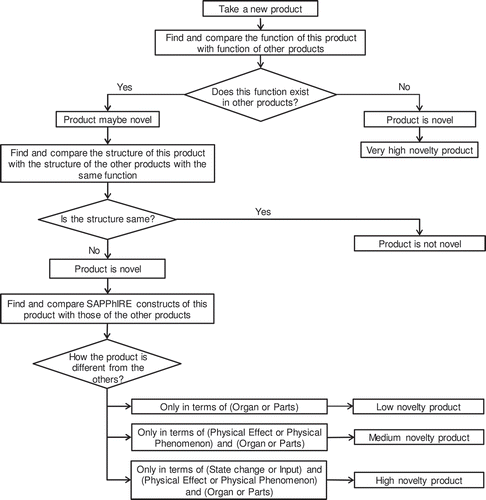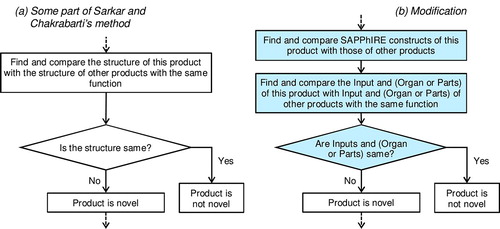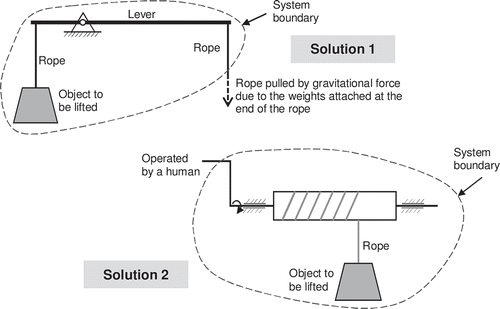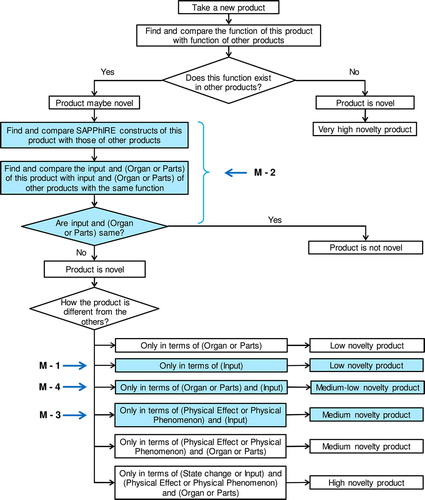Figures & data
Figure 2. SAPPhIRE model of causality (Chakrabarti et al., Citation2005).
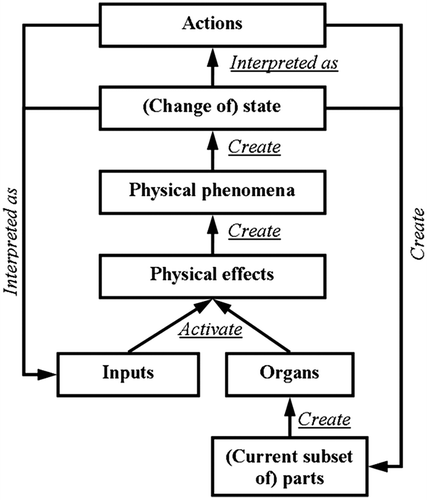
Figure 6. Modification 3: Addition of a step to consider differences in physical effects and inputs.

Table 1. Average novelty ranks by experienced designers, and by using the refined method and Sarkar and Chakrabarti’s method (3, 4 means the rank can be 3 or 4).
Table 2. Spearman’s rank correlations.

